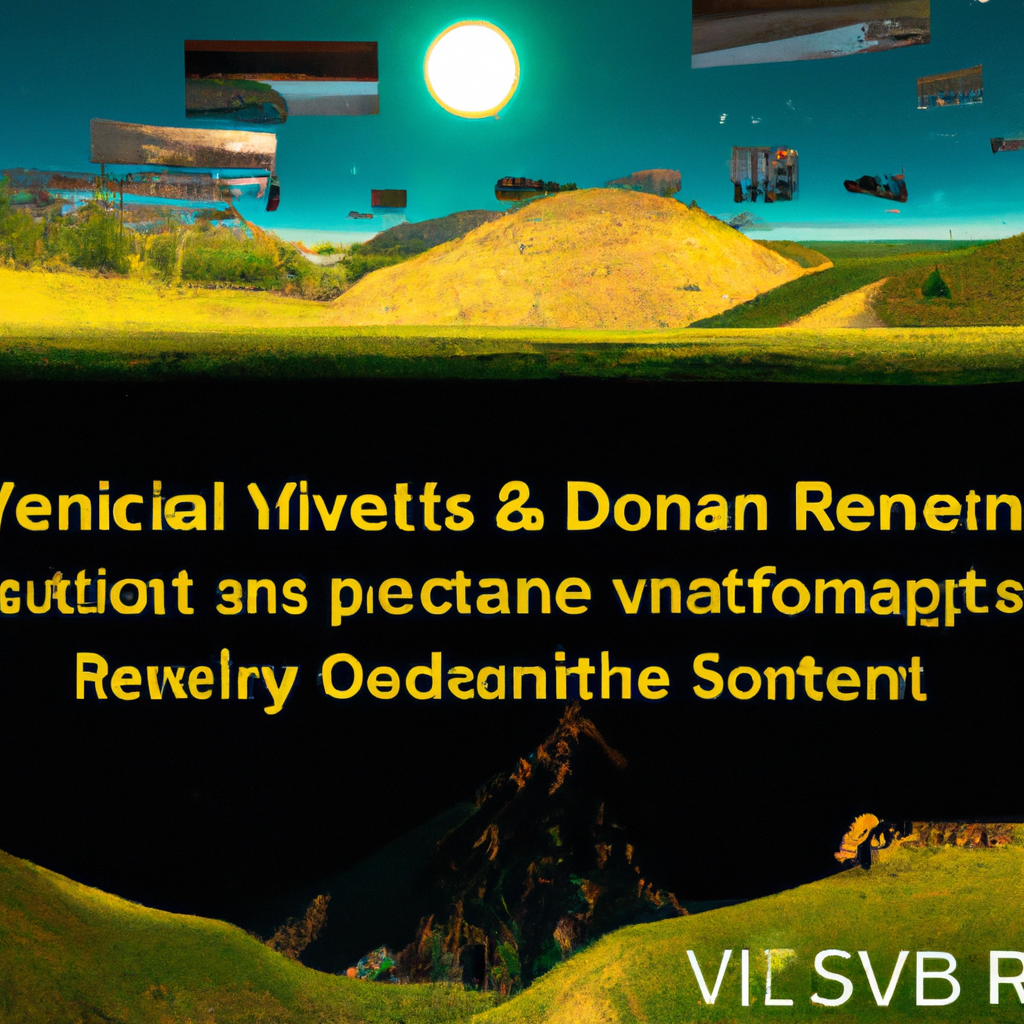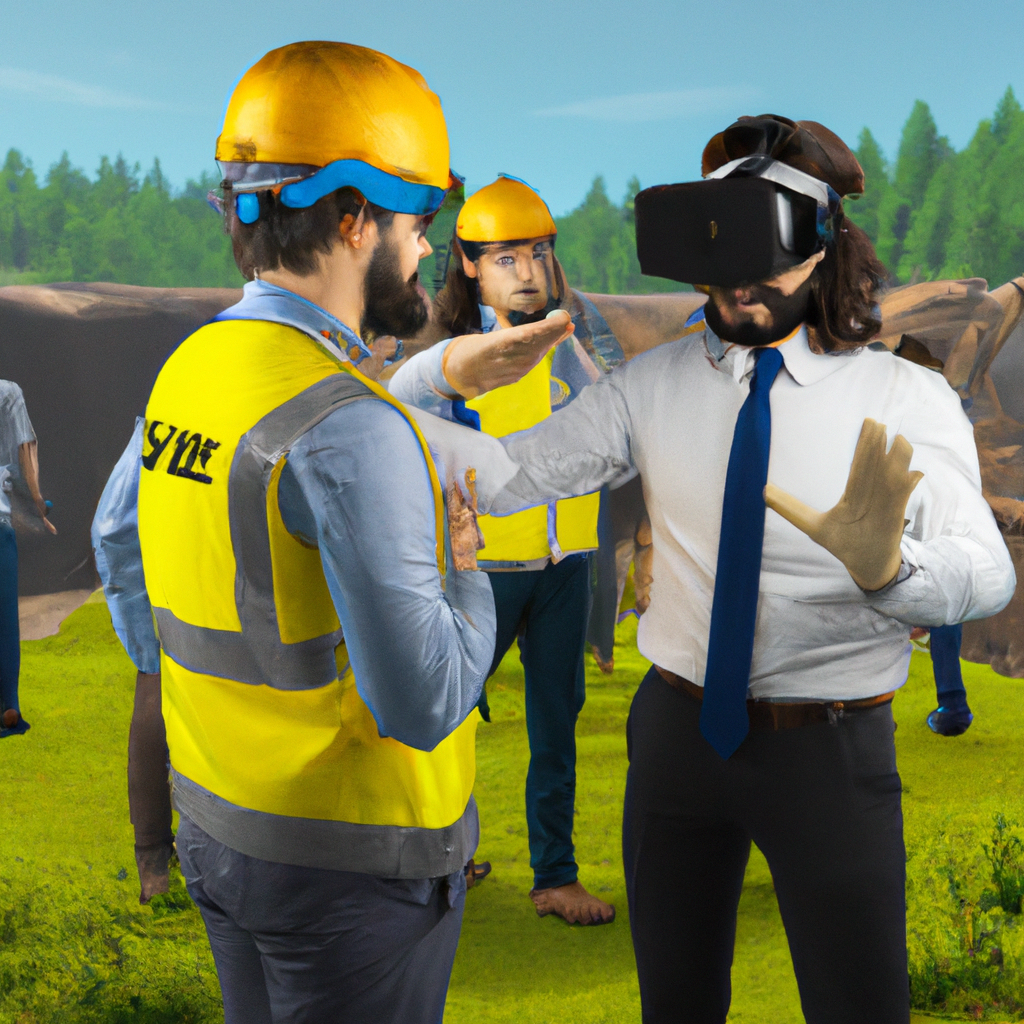작성자 정보
- dml0211 작성
- 작성일
컨텐츠 정보
- 3,632 조회
- 목록
본문

가상 현실(VR) 기술은 특히 현장 평가 및 교정 분야에서 환경 산업에 큰 영향을 미치고 있습니다. VR은 환경 데이터를 시각화하고 분석하는 몰입형 및 대화형 방법을 제공하여 엔지니어와 과학자가 더 많은 정보에 입각한 결정을 내리고 현장 평가 및 교정 프로세스의 속도와 효율성을 향상시킬 수 있습니다.
환경 산업에서 VR을 사용하는 것의 주요 이점 중 하나는 오염된 사이트의 가상 모델을 만들 수 있는 능력입니다. 이러한 가상 모델은 현장의 실제 표현을 제공하여 엔지니어와 과학자가 가상 환경을 살펴보고, 잠재적인 위험을 식별하고, 문제 해결 계획을 개발할 수 있도록 지원합니다. 엔지니어와 과학자는 VR을 사용하여 다양한 시나리오를 시뮬레이션하고, 다양한 교정 옵션의 잠재적 영향을 평가하며, 최선의 조치에 대한 정보에 입각한 의사 결정을 내릴 수 있습니다.
한국에서는 삼성물산과 같은 회사들이 현장 평가와 교정 과정을 개선하기 위해 VR 기술을 사용하고 있습니다. 오염된 현장의 가상 모델을 생성함으로써 Samsung C&T는 잠재적인 위험을 식별하고 효과적인 교정 계획을 개발하여 현장 평가 및 교정 작업과 관련된 시간과 비용을 절감할 수 있습니다.

전반적으로, 환경 산업에서 VR 기술의 사용은 현장 평가 및 교정 작업이 수행되는 방식에 혁명을 일으킬 수 있는 잠재력을 가지고 있습니다. VR은 데이터를 시각화하고 분석하는 보다 몰입적이고 상호 작용적인 방법을 제공함으로써 엔지니어와 과학자가 더 많은 정보에 입각한 결정을 내리고 사이트 평가 및 교정 프로세스의 속도와 효율성을 향상시킬 수 있도록 합니다.
요약:
가상 현실(VR) 기술은 특히 현장 평가 및 교정 분야에서 환경 산업에 상당한 영향을 미치고 있습니다. VR은 환경 데이터를 시각화하고 분석하는 보다 몰입적이고 상호 작용적인 방법을 제공하여 엔지니어와 과학자가 더 많은 정보에 입각한 결정을 내리고 현장 평가 및 교정 프로세스의 속도와 효율성을 향상시킬 수 있습니다. 한국에서는 삼성물산과 같은 회사들이 VR을 사용하여 오염된 현장의 가상 모델을 만들고, 잠재적인 위험을 파악하고, 효과적인 교정 계획을 개발하고 있습니다. 환경 산업에서 VR 기술의 사용은 현장 평가 및 교정 작업이 수행되는 방식에 혁명을 일으키고 있습니다.
환경 산업에서 VR을 사용하는 또 다른 이점은 오염된 사이트의 잠재적 위험과 영향에 대해 이해 관계자를 교육하고 교육할 수 있는 능력입니다. 이해 관계자가 다양한 교정 옵션의 잠재적 영향을 보고 이해할 수 있는 가상 환경을 제공함으로써 VR 기술은 교정 작업에 대한 지원을 구축하고 환경 교정의 중요성에 대한 대중의 이해를 높이는 데 도움이 될 수 있습니다.

또한, VR 기술을 사용하여 기름 유출이나 화학 물질 방출과 같은 환경 재해의 잠재적인 영향을 시뮬레이션할 수 있으므로 환경 대응자는 통제되고 안전한 환경에서 이러한 유형의 이벤트를 훈련하고 준비할 수 있습니다. 이러한 유형의 교육은 응답 시간을 개선하고 환경 재해의 영향을 줄이는 데 도움이 될 수 있습니다.
전반적으로 환경 산업에서 VR 기술을 사용하면 현장 평가 및 교정 프로세스 개선, 환경 교정 노력에 대한 대중의 이해 및 지원 증가, 환경 재해에 대한 교육 및 준비 개선 등 다양한 이점을 얻을 수 있습니다.
결론적으로, 환경 산업에서 가상 현실 기술을 사용하는 것은 현장 평가 및 교정 프로세스를 개선하기 위한 노력에서 큰 진전입니다. VR 기술은 환경 데이터를 시각화하고 분석하는 보다 몰입적이고 쌍방향적인 방법을 제공함으로써 엔지니어와 과학자가 더 많은 정보에 입각한 결정을 내리고, 교정 작업에 대한 지원을 구축하며, 환경 재해 발생 시 응답 시간을 개선할 수 있도록 지원합니다.

요약:
가상 현실(VR) 기술은 특히 현장 평가 및 교정 분야에서 환경 산업에 상당한 영향을 미치고 있습니다. VR은 환경 데이터를 시각화하고 분석하는 보다 몰입적이고 상호 작용적인 방법을 제공하여 엔지니어와 과학자가 더 많은 정보에 입각한 결정을 내리고 현장 평가 및 교정 프로세스의 속도와 효율성을 향상시킬 수 있습니다. VR 기술은 오염된 현장의 잠재적 위험과 영향에 대해 이해 관계자를 교육하고 환경 재해의 잠재적 영향을 시뮬레이션하여 대응 시간을 개선하고 환경 재해의 영향을 줄이는 데도 사용되고 있습니다. 환경 산업에서 VR 기술을 사용하는 것은 현장 평가 및 교정 프로세스를 개선하고 환경 교정 노력에 대한 대중의 이해와 지원을 높이기 위한 노력에서 큰 진전입니다.
Virtual Reality (VR) technology is having a major impact on the environmental industry, particularly in the fields of site assessment and remediation. VR provides an immersive and interactive way of visualizing and analyzing environmental data, which allows engineers and scientists to make more informed decisions and improve the speed and efficiency of the site assessment and remediation process.
One of the key benefits of using VR in the environmental industry is the ability to create virtual models of contaminated sites. These virtual models provide a real-life representation of the site, allowing engineers and scientists to walk through the virtual environment, identify potential risks, and develop remediation plans. By using VR, engineers and scientists can simulate different scenarios, evaluate the potential impacts of different remediation options, and make informed decisions about the best course of action.
In Korea, companies such as Samsung C&T are using VR technology to improve site assessment and remediation processes. By creating virtual models of contaminated sites, Samsung C&T can identify potential risks and develop effective remediation plans, reducing the time and cost associated with site assessments and remediation efforts.
Overall, the use of VR technology in the environmental industry has the potential to revolutionize the way that site assessments and remediation efforts are performed. By providing a more immersive and interactive way of visualizing and analyzing data, VR is enabling engineers and scientists to make more informed decisions and improve the speed and efficiency of site assessment and remediation processes.
Summary:
Virtual Reality (VR) technology is having a significant impact on the environmental industry, particularly in the fields of site assessment and remediation. VR provides a more immersive and interactive way of visualizing and analyzing environmental data, allowing engineers and scientists to make more informed decisions and improve the speed and efficiency of the site assessment and remediation process. In Korea, companies such as Samsung C&T are using VR to create virtual models of contaminated sites, identify potential risks, and develop effective remediation plans. The use of VR technology in the environmental industry is revolutionizing the way that site assessments and remediation efforts are performed.
Another benefit of using VR in the environmental industry is the ability to train and educate stakeholders about the potential risks and impacts of contaminated sites. By providing a virtual environment where stakeholders can see and understand the potential impacts of different remediation options, VR technology can help to build support for remediation efforts and increase public understanding about the importance of environmental remediation.
In addition, VR technology can be used to simulate the potential impacts of environmental disasters, such as oil spills or chemical releases, allowing environmental responders to train and prepare for these types of events in a controlled and safe environment. This type of training can help to improve response times and reduce the impact of environmental disasters.
Overall, the use of VR technology in the environmental industry is providing numerous benefits, including improved site assessment and remediation processes, increased public understanding and support for environmental remediation efforts, and improved training and preparation for environmental disasters.
In conclusion, the use of virtual reality technology in the environmental industry is a major step forward in the effort to improve site assessments and remediation processes. By providing a more immersive and interactive way of visualizing and analyzing environmental data, VR technology is enabling engineers and scientists to make more informed decisions, build support for remediation efforts, and improve response times in the event of environmental disasters.
Summary:
Virtual Reality (VR) technology is having a significant impact on the environmental industry, particularly in the fields of site assessment and remediation. VR provides a more immersive and interactive way of visualizing and analyzing environmental data, allowing engineers and scientists to make more informed decisions and improve the speed and efficiency of the site assessment and remediation process. VR technology is also being used to train and educate stakeholders about the potential risks and impacts of contaminated sites and to simulate the potential impacts of environmental disasters, helping to improve response times and reduce the impact of environmental disasters. The use of VR technology in the environmental industry is a major step forward in the effort to improve site assessments and remediation processes and to increase public understanding and support for environmental remediation efforts.







